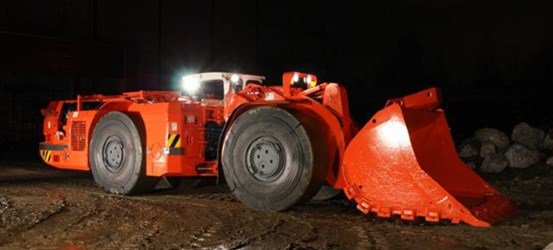Sandvik Mining and Rock Technology has released its data interoperability policy, which specifies how Sandvik systems, equipment and tools share data in the mining digital ecosystem. The policy outlines the principles by which Sandvik systems can communicate in a digitised mining and rock excavation industry.
The Sandvik Mining and Rock Technology Interoperability Policy is now available on the My Sandvik customer portal. It outlines the principles by which Sandvik systems can communicate within a digital ecosystem, including data accessibility, fleet data compatibility, data rights and control and data privacy.
“In their desire for the optimal safety, productivity and profitability of their mining operations, our customers are looking to digital technologies to enable optimised processes,” says Patrick Murphy, President, Rock Drills and Technologies, Sandvik Mining and Rock Technology. “Sandvik systems and equipment will form a key part of the digital ecosystems at these mines of the future.”
Sandvik’s digital offering ranges from systems for autonomous equipment and features, such as the industry-leading AutoMine® platform, to systems for process management and optimisation, to tailored data analytics solutions. “Sandvik understands the essential role its systems will play within the larger digital ecosystem at each of its customers’ sites. Sandvik systems will be able to interface and exchange data with other systems around the operation, ensuring that the value of the data can be unlocked. Sandvik will take the lead in shaping industry standards in data interoperability.”
“Our customers have naturally asked that they can access equipment health and productivity data from the solutions that we provide them,” Murphy says. “While interfaces are not available for all equipment models today, these will be progressively rolled out as new products come to market. However, there are today already over 1,000 machines connected to our industry-leading, cloud-connected productivity and eCommerce platform, My Sandvik, as well as the more advanced OptiMine® mining process optimisation platform. Data interfaces can be created so that the customer can access the raw data from these offerings.”
The data interoperability policy outlines the principles behind Sandvik’s digital offering, explaining, for example, how data can be accessed, depending on the customer’s fleet – i.e. at equipment level, at server level onsite or within the cloud. And, of course, how it is protected.
“We know that cloud-based data processing services offer tremendous advantages over local server based solutions, and are critical in leveraging the full potential of the industrial Internet of Things,” says Manny Maloney, General Counsel at Sandvik Mining and Rock Technology. “And when our customers choose us to process data on their behalf, we don’t take it lightly. Access to data needs to be defined and restricted, because it is often operator-related and commercially-sensitive.”
The Sandvik data interoperability policy is designed to ensure the highest levels of data privacy and security whilst ensuring the customer retains all rights to information related to the use and application of their equipment. The policy has been designed with the General Data Protection Regulation (GDPR) in mind. The GDPR is a European Union (EU) law on data protection and privacy which also applies to the export of personal data outside the EU. It comes into effect on 25 May 2018, with the intention of harmonising data privacy laws across Europe.
“Although the GDPR is a European regulation, we aspire to apply the same level of rigour regarding data privacy across the world, wherever we operate,” added Maloney.











